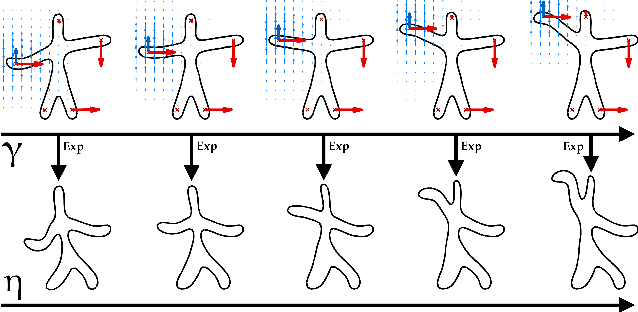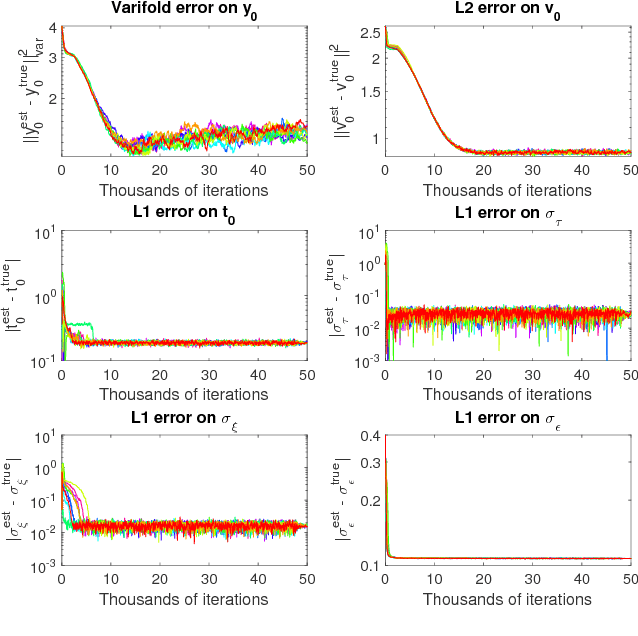Learning distributions of shape trajectories from longitudinal datasets: a hierarchical model on a manifold of diffeomorphisms
Paper and Code
Jun 13, 2018



We propose a method to learn a distribution of shape trajectories from longitudinal data, i.e. the collection of individual objects repeatedly observed at multiple time-points. The method allows to compute an average spatiotemporal trajectory of shape changes at the group level, and the individual variations of this trajectory both in terms of geometry and time dynamics. First, we formulate a non-linear mixed-effects statistical model as the combination of a generic statistical model for manifold-valued longitudinal data, a deformation model defining shape trajectories via the action of a finite-dimensional set of diffeomorphisms with a manifold structure, and an efficient numerical scheme to compute parallel transport on this manifold. Second, we introduce a MCMC-SAEM algorithm with a specific approach to shape sampling, an adaptive scheme for proposal variances, and a log-likelihood tempering strategy to estimate our model. Third, we validate our algorithm on 2D simulated data, and then estimate a scenario of alteration of the shape of the hippocampus 3D brain structure during the course of Alzheimer's disease. The method shows for instance that hippocampal atrophy progresses more quickly in female subjects, and occurs earlier in APOE4 mutation carriers. We finally illustrate the potential of our method for classifying pathological trajectories versus normal ageing.
 Add to Chrome
Add to Chrome Add to Firefox
Add to Firefox Add to Edge
Add to Edge